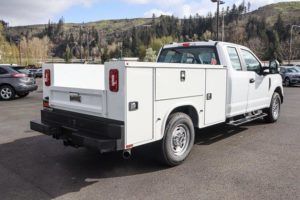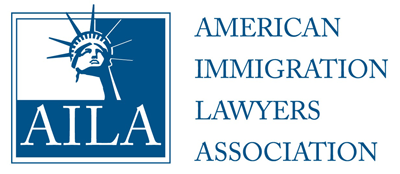I-864: Self Employment and Business Ownership

Self-Employment and Business Ownership are most commonly one of the MOST difficult types of income to prove to USCIS. Why is that? Well, there are three reasons:
- First: USCIS Officers have generally never been (1) Business owners or (2) Tax experts.
- Second: Business and Self Employment do not generally get paid by the hour or on a consistent schedule.
- Third: Since there are a few ways to file taxes for self employment and business ownership, USCIS focuses and requests can be confusing.
If you are focusing on income from self-employment / business ownership, you generally do not receive a W-2 Employment and its associated (consistent) Weekly or Bi-weekly paycheck. W2 Employment is the easiest form of income to be reviewed by USCIS.
So, What is USCIS Looking For in Self-Employment Income?
In short, it is one of the most difficult items for most businesses:
the Current Tax Year’s AGI (Adjusted Gross Income)
The AGI can be located in prior tax years in the 1040 Tax Return Filings, but that does not exist for current tax yets (yet). Instead, the current tax year usually has:
- Accounts receivable or incoming payments
- reoccurring expenses
- business credit card payments
- debt repayments
- insurance payments
- refunds
- chargebacks
- Occasionally . . . profit!
For example:
A Business can receive $100,000 annually from clients/patients/jobsites, but if $99,000 goes to expenses, the Business would ONLY profit $1,000. USCIS is looking for the $1,000 , and they do not really recognize the $100,000, nor do they understand the $99,000.
What Documents are needed to be provided to USCIS?
The following is NOT an exhaustive list, but it is a good starting point. Let’s break the documents into what they mean to a USCIS Officer, since that is more beneficial than just providing a mere bulletin list:
-
- Proof of ownership
- Articles of Formation
- Articles of Incorporation
- Registering a DBA
- Bill of Sale of existing business
- Current Income Proof: Business Bank Statements for the past 12 months (This can show a year’s worth of receivables and expenses, with USCIS giving a lot of focus to “quantity” and “ending balance in the positive or negative)
- Brief Explanation:
- Summary of Current Profits and Losses , which can be estimated by the business owner or accountant for the business. It can be very brief and make comparisons to prior years
- (Super Helpful) Quickbooks or other bookkeeping software can be used to create a “current” report for “current profits and losses.”
- Evidence to back up past business tax filings:
- Most Recent Business Schedules
, whichever forms are used in the tax filing (differs based on many factors):
- Schedule A Tax Form – Report Itemized Deductions
- Schedule B Tax Form – Interest & Dividend Income
- Schedule C Tax Form – Self Employed Income
- Schedule D Tax Form – Capital Gain or Losses
- Schedule E Tax Form – Real Estate Gain or Losses
- Schedule SE Tax Form – Self-employment Tax
- Schedule K-1 – Business Tax Form
- Sponsor’s 1040 Tax Return Forms for the past 3 years
- Sponsor’s IRS Tax Return Transcripts for the past 3 years, more info found here: /immigration/how-to-request-your-irs-transcript-helpful-guide-to-acquire-this-commonly-requested-immigration-supporting-document/
- Sponsor’s IRS Account Transcript for the MOST RECENT YEAR , this is an easier way to show is taxes are still owed at time of the transcript being downloaded
- Sponsor’s Quarterly Tax Filings , if the business files with the IRS Quarterly
- Most Recent Business Schedules
, whichever forms are used in the tax filing (differs based on many factors):
- Proof of ownership
How much Profit or AGI is USCIS Looking for?
The I-864P is a guideline that states the “minimum” needed based on location and household size. The Guideline updates every March and is located here: https://www.uscis.gov/i-864p
Can I provide Business assets to supplement my income?
Yes, but there is a catch:
- First, you would have to own 100% of the asset.
- Second, the asset should be 3 or 5 times the value of the needed amount to sponsor an immigrant OR it should have significant value.
- Third, a photo of the asset helps.
- Fourth, you will need to show how it is receiving its current value (i.e. Kelly Blue Book, Purchase Price and taxable depreciation amount, Listing of the exact used asset for sale by another business, ect.).
- Fifth, you should have a significant amount of equity or fully own the asset.
Here are 3 examples to help paint a better picture:
Example 1: Business Asset is a Work Truck

Vehicle is valued at $65,000. If the Business Owner owns 100% of the vehicle (no loan), and has a personal vehicle or motorcycle, the vehicle can be added from the business and would add about $22,000 to the current year’s AGI, for I-864 Purposes.
Example 2: Business Asset is a Commercial Building
Many businesses have an office location. That commercial real estate can be used. An office building, even small one, can have a rather large “price tag” / value. The Tax Assessment, Mortgage Statement, and Deed can show the property’s equity. A building valued at $300,000, and with an equity of $90,000, can be added from the business and would add about $30,000 to the current year’s AGI, for I-864 Purposes.
Example 3: Business Asset is a piece of Equipment
The equipment is valued at $500,000. If the Business Owner owns 20% of the equipment and the other 80% is covered by the loan, the equipment can be added from the business and would add about $33,000 to the current year’s AGI, for I-864 Purposes.
Are there other resources on the I-864?
Below is a brief list of common I-864 related topics:
- Basics: /immigration/the-i-864-explained-affidavit-of-support/
- Joint Sponsorship: /immigration/i-864-affidavit-of-support-joint-sponsor-guidance/
- RFE Response: /immigration/adjustment-of-status/the-i-864-i-485-request-for-evidence-rfe-what-to-do-when-you-receive-it/
- Using Assets: /immigration/adjustment-of-status/i-864-asset-calculations/
- Using VA Disability: /immigration/va-disability-and-us-immigration/
- Using SSDI: /immigration/i-864-sponsorship-how-is-ssi-and-ssdi-assessed/
Disclaimer: This Blog is made available by the lawyer or law firm publisher for educational purposes only as well as to give you general information and a general understanding of the law, not to provide specific legal advice. By using this blog site you understand that there is no attorney-client relationship between you and the Blog/Web Site publisher. The Blog should not be used as a substitute for competent legal advice from a licensed professional attorney in your state.
The post I-864: Self Employment and Business Ownership appeared first on Fickey Martinez Law Firm.












